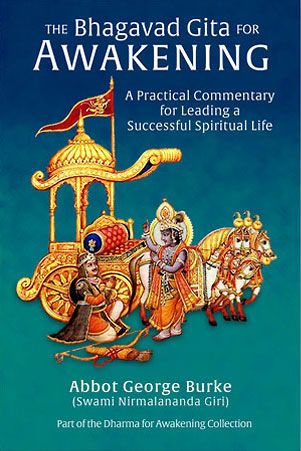
He who hates no being, is friendly and compassionate, free from “mine,” free from “I,” the same in pain and pleasure, patient, the yogi who is always content, self-controlled and of firm resolve, whose mind and intellect are fixed on me, who is devoted to me–he is dear to me. He who agitates not the world, and whom the world agitates not, who is freed from joy, envy, fear and distress–he is dear to me. He who is indifferent, pure, capable, objective, free from anxiety, abandoning all undertakings, devoted to me–he is dear to me. He rejoices not, he hates not, he grieves not, he desires not, renouncing the agreeable and disagreeable, full of devotion–he is dear to me. The same to enemy and to friend, the same in honor and disgrace, in heat and cold, pleasure and pain, freed from attachment, the same in blame and praise, silent, content with anything whatever, not identifying with any place or abode, steady-minded, full of devotion–this man is dear to me (12:13-19).
Learning to behave
Somewhere a very long time ago (over half a century) I read in an article by Paramhansa Yogananda that his guru, Sri Yukteswar, said to him at the beginning of their association: “Learn to behave.” Yogananda commented that this was the most important teaching he ever received from Sri Yukteswar. I admit that it puzzled me because I was so conditioned by the “You behave yourself!” rebukes from parents to unruly children. Nevertheless, something seeped into my consciousness, because when two years later I went to India I immediately realized that the major thing I needed to do there was learn to behave. Part of the Aryan Eightfold Path taught by Buddha was Right Conduct.
It is a wonderful thing to discover yoga, a spiritual methodology that works according to precise principles, having nothing to do with the ups and downs, highs and lows, of haphazard religious endeavors. There are no hit-or-miss random payoffs or the whims of a pleased or displeased deity in the life of a yogi. The results are very real and very exact. If the aspirant has learned yoga that will lead to realization of the Self, a determined resolve to gain higher awareness and the will power needed to practice the yoga faithfully and skillfully is all that is needed. Leaving behind the Master/Slave syndrome of ignorant religion (along with that of false yoga and false gurus and their attendant toxic guru/disciple enslavement), the yogi moves onward to the revelation of his divine Self as an integral and eternal part of God.
But there are very definite and necessary qualifications for the aspiring yogi, and Krishna is about to explain them to us. So to I am going to divide the above verses into a “yogi list.”
A yogi:
hates no being
is friendly and compassionate
is free from attachment to possessions
is free from egotism
is indifferent to pain and pleasure
is patient
is always contented and balanced in mind
is self-controlled
is one whose conviction is firm
is one whose mind and intellect are fixed on God
is devoted to God
does not agitate [trouble] the world
is not agitated [troubled] by the world
is freed from joy
is freed from envy
is freed from fear
is freed from distress [anxiety]
is free from wants
is pure
is capable
is disinterested
is free from anxiety
has abandoned all undertakings
neither rejoices nor hates
grieves not
desires not
has renounced the pleasant and the unpleasant
is alike toward enemy and friend
is the same in honor and dishonor [disgrace]
alike [indifferent] in cold and heat
alike in pleasure and pain
freed from attachment
indifferent to blame or praise
is silent
is content with anything whatever
is homeless [in his heart, abiding only in God]
is steady-minded
Five times in these verses Krishna comments that such a one “is dear to me.” It is easy to see why.
To conclude the subject Krishna says:
Those who honor this immortal dharma just described, endued with faith, deeming me the Goal Supreme, devoted–they are exceedingly dear to me (12:20).
The only comment needed here is for me to point out that the wisdom taught by Krishna is not philosophy or theology but a way of life. We should always keep this in mind.
Read the next article in the Bhagavad Gita for Awakening: The Field and Its Knower







